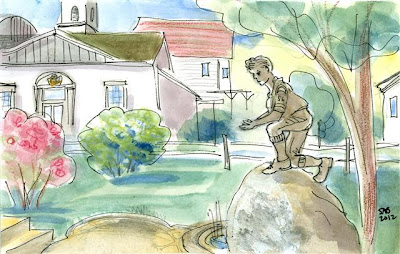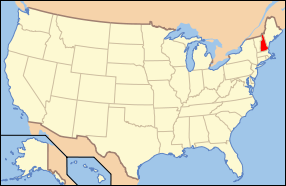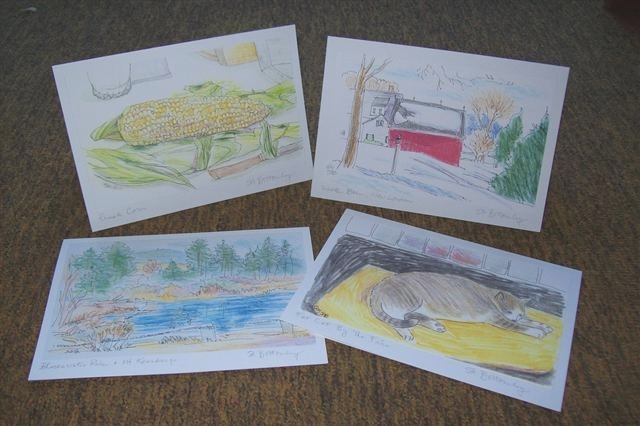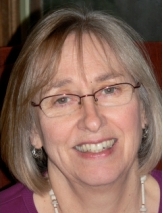Litchfield is a small town along the Merrimack River, nestled between Manchester and Nashua. We saw lots of rich brown soil, ready for this year’s crops to be planted. The land next to rivers is always very fertile, and it was good to see it used for its best purposes. Meaning, no housing there, just farmers’ fields.
The white wooden clapboard building states that it is the home of the Litchfield Historical Society. The red, white, and blue bunting was up in time for Memorial Day, at the end of May, and will likely stay there until Independence Day, July 4. I don’t know what the original use of the building was. The fire station is next door. One of their vehicles is parked in the shade. I sat in the grass to draw this, and that perspective explains the very tall purple irises in bloom.
Historical Societies are a wonderful New England thing. They range in size and scope from one-room adjuncts to other buildings, run by very dedicated volunteers and open one day a week or perhaps just by appointment, to large activities with professional staff such as the one located in the Amoskeag Mills complex in Manchester. The thing that’s common to all is a love of their locality and a deep appreciation of its rich history. You can find links to over 40 such organizations on this page at DirectoryNH.com. And there are surely others that haven’t yet gotten quite up to speed with the Information Age, but you can find them if you look hard enough once you get to town.
Historical Societies are a wonderful New England thing. They range in size and scope from one-room adjuncts to other buildings, run by very dedicated volunteers and open one day a week or perhaps just by appointment, to large activities with professional staff such as the one located in the Amoskeag Mills complex in Manchester. The thing that’s common to all is a love of their locality and a deep appreciation of its rich history. You can find links to over 40 such organizations on this page at DirectoryNH.com. And there are surely others that haven’t yet gotten quite up to speed with the Information Age, but you can find them if you look hard enough once you get to town.
We arrived in Londonderry at midday, and as I have mentioned before, I just don’t draw on an empty stomach. So we had a very nice lunch at a corner restaurant, The Coach Stop. We ate on a terrace, overlooking the front lawn. On this lawn sat a buggy. It was in lovely condition, actually looked new. The old vehicle seemed to gaze out towards the busy highway crossroads.
A friend once remarked to me that there is nothing I won’t draw. I replied that there is little that I won’t consider drawing. And I drew this locomotive engine at an incredible pace because the black flies were swarming around my face. I wasn’t prepared for the onslaught of the pesky flies that aim for your eyes, since our region 2 hours south was already pretty much through with them for the year.
After a few minutes I started to speed up the drawing process even more by just drawing where the train was NOT. In other words, I penciled in the shapes where I could see light through the complex undercarriage of the train. And I finished it at home from my notations. Artists often focus on negative spaces for design anyway, so it worked well. It is all pencil with watercolor for the red, blue, and green shapes.
And the vehicle is a lumber train engine in Lincoln in the White Mountains area. It is no longer used, and is now perched near the entrance to the Loon Mountain Ski Resort. The railroad opened up the White Mountains to logging, as the rivers weren’t suitable for floating the logs down to the mills as was done elsewhere. Logging practices of the day were horrendous, leading to the creation of the White Mountain National Forest and the attendant restrictions on the industry.
The sign said that three trains a day went through town loaded with felled trees. And there was a photo of the engine pulling railroad cars piled with pre-built lumber towns into place for the summer logging season. The lumber industry in this area is pretty much over. Tourists are the money makers now.
The sign said that three trains a day went through town loaded with felled trees. And there was a photo of the engine pulling railroad cars piled with pre-built lumber towns into place for the summer logging season. The lumber industry in this area is pretty much over. Tourists are the money makers now.
Plymouth is a small city at the southern edge of the White Mountains. My sister Aimée was born here while our father was a graduate student at Plymouth State University. When we lived here it was called Plymouth State Teacher’s College. He was getting a Master’s degree in preparation for becoming a science teacher. In one class, he was learning to give IQ tests. I think I was the only person in the family who agreed to take it. I was five years old, and I remember the pretty red and white blocks I had to rearrange in a certain time.
Plymouth has a shaded sort of oval shaped common or town park. I found this bronze statue there and liked it. It represents a Boy Scout and was sculpted in 1932 by G. H. Borst. The boulder is from the nearby Franconia Notch and the natural pothole basin, at the foot of the boulder, is from the Baker River. I love the details on sculpture, in this case the boy has patches on his sleeve from a local troop, Troop 56.
The university buildings are up on the hill behind the white post office.
Here is my husband resting on a bench at the Audubon Center in Auburn, NH. The wooden boxes on posts are most likely for nesting bluebirds. I think they have at least 85 of them.
The building is named the Broad Barn, for the donors named Mr. and Mrs. Broad. The orange sign says bat box. The center wasn’t yet open for spring and the ground was all soggy, so we didn’t walk around.
The building is named the Broad Barn, for the donors named Mr. and Mrs. Broad. The orange sign says bat box. The center wasn’t yet open for spring and the ground was all soggy, so we didn’t walk around.
The sign on the red building says “Torrent Hose Co. No 1 RFD”. It is the fire station in Raymond, NH. Clearly it is an old house, repurposed and expanded horizontally and perhaps raised up one story as well. I was sitting on a bench in the town green to draw this.
It is good to have highways to bypass the little towns, in this case Route 101. But then you never see the small towns and have no sense of where you really are. This is one of the many reasons that I am enjoying my Draw-NH project. The only cure for wanderlust is wandering.
It is good to have highways to bypass the little towns, in this case Route 101. But then you never see the small towns and have no sense of where you really are. This is one of the many reasons that I am enjoying my Draw-NH project. The only cure for wanderlust is wandering.
I don’t post my drawings exactly when I draw them. I put them in a box to accumulate until I see at least two subjects that look like they want to tell a story. I can tell from the orange colors of the leaves that I drew this last autumn.
The square boxy white building is the former fire station in Hollis, NH, now the home of the local Historical Society. The letters on the sign spell out the charming name of the “Always Ready Engine House”. It was home of a horse drawn carriage and hose.
The tower in the background belongs to the town offices. The little tree appears to be atop the fire station roof, but it is merely centered behind it. I could have moved it, or left it out, but I chose to keep it there like a topknot. Drawing makes you feel powerful.
And here we have the railroad station in East Kingston, NH. Yellow and brown are the colors of the Boston and Maine Railroad, I’m told. Commonly referred to as the B&M. I think it is possible that a few trains still use these tracks.
I do have to be careful when counting toward my goal of drawing all 234 towns in the state. East Kingston is indeed a separate town, though many places whose names feature compass points are just informally designated local areas of the actual town. Acton, Massachusetts, where I lived during most of my high school and college years, is the only place I’ve ever encountered that has a locally recognized (though unofficial) North, East, South, West, and Center.
And another yellow painted wooden building. New England is all about clapboard construction from local timber. This is called the Ladd-Gilman house in Exeter, NH. It is the side view, from a viewpoint on a street way below the house.
There is in fact a cannon on the green grass pointing out towards the passersby. It was hard to draw from a point of perspective, and hard to draw a weapon aimed at me. So sorry to those who are missing the cannon and saying “where is it?”.
Exeter, it seems to me, has a larger number of yellow houses than the typical New Hampshire town. Some day I would like to understand why. Right now, I just enjoy the cheery phenomenon.
This is the steeple of the Pilgrim United Church of Christ in the town of Brentwood, NH. I liked the use of red paint instead of the standard green, and of course, I was taken by the gold colored fish weather vane. The churches of New Hampshire almost always seem to have a weather vane on the top rather than a cross. It is important to know which way the wind is blowing.
An historical marker to the side of this church told of a peace rally there in 1812. Two thousand people gathered to hear Daniel Webster speak against Americans entering into the War of 1812 against the British. Many historians regard the War of 1812 as the Revolutionary War, part II.
We have been friends with the British ever since we settled that conflict. We call each other cousins. When we lived there for three years as a family, the daily struggle with language and cultural differences nearly did us in. At times.
I sat on the grass directly underneath this tall steeple of the Parkhill Meeting House in Westmoreland, NH. The current appearance of the meeting house dates from 1824. And it was moved to this spot from a nearby location as the population shifted. I am so impressed with the skill to move buildings. I included this drawing and the next in honor of June brides.
Walpole is an attractive village in the western part of the state along the Vermont border. I just knew that I would have some trouble deciding what to draw. So I went into the town’s Old Academy Historical Society. And I happily wandered through the exhibits.
I was struck by a beautiful wedding gown from the 1870’s. The dress fabric was champagne colored satin, with multitudes of chiffon roses. The bodice was a delicate sheer lace with hand appliqued flower clusters. I liked it so much I decided to draw it on the spot. And then I got the idea to envision the wedding bouquet. And then I extended the paper to draw the bride’s face, hair and veil, again through my imagination.
I used to work for an old large country estate in Maryland. For four and a half years, I went to a wedding a week. My job was to ensure that all was going smoothly. Or if not, to assist where needed. It was a real behind-the-scenes job. I liked my job as I ate well, heard wonderful music, and witnessed much happiness and joy.
I drew the Barrington Community Playground in Barrington, NH while sitting in the car. There were several parents there supervising and having a Saturday afternoon chat. But I chose to just draw the children. It was quite a fun adventure style playground that the kids were enjoying a lot.


















No comments:
Post a Comment